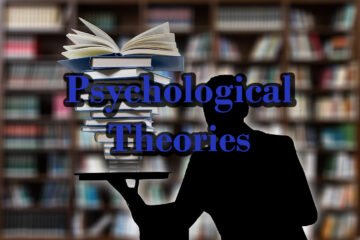
Click below to listen to this article:
The theory of self-discrepancy
The theory of self-discrepancy, proposed by psychologist E. Tory Higgins, is a framework for understanding how people relate to their own self-concepts. According to this theory, people have three domains of self: the actual self, the ideal self, and the ought self. The actual self is the person’s representation of their current attributes and abilities. The ideal self is the person’s representation of their desired attributes and abilities. The ought self is the person’s representation of their expected attributes and abilities, based on their sense of duty or obligation. The theory of self-discrepancy suggests that people experience different types of emotions depending on how their actual self matches or mismatches with their ideal and ought selves. For example, a person may feel happy and satisfied if their actual self is congruent with their ideal self, or they may feel sad and disappointed if their actual self falls short of their ideal self. Similarly, a person may feel proud and confident if their actual self is congruent with their ought self, or they may feel guilty and anxious if their actual self violates their ought self. In this article, we will review the main concepts and applications of the theory of self-discrepancy, as well as some of the criticisms and limitations of this approach.
History and background of the theory of self-discrepancy
The theory of self-discrepancy was developed by Edward Tory Higgins in 1987 as a way of explaining how different types of inconsistencies between one’s actual self and one’s ideal or ought self can lead to different kinds of emotional discomforts (e.g., fear, threat, restlessness) [1]. The theory assumes that people have internalized standards or self-guides that represent their hopes, aspirations, wishes, or obligations for themselves.
These self-guides can be derived from one’s own preferences or from the expectations of others. The theory also distinguishes between three domains of the self: the actual self, the ideal self, and the ought self. The actual self is one’s representation of the attributes that one believes one possesses or that others believe one possesses. The ideal self is one’s representation of the attributes that one or someone else would like one to possess. The ought self is one’s representation of the attributes that one or someone else believes one should possess [2].
According to the theory, when there is a discrepancy between the actual self and the ideal or ought self, people experience negative emotions that vary depending on the type and direction of the discrepancy. For example, a discrepancy between the actual self and the ideal self can result in dejection-related emotions, such as disappointment, dissatisfaction, or frustration. A discrepancy between the actual self and the ought self can result in agitation-related emotions, such as anxiety, guilt, or fear [3]. The theory also suggests that people are motivated to reduce or eliminate these discrepancies by changing their behaviour, their cognition, or their effect [4]. The theory of self-discrepancy has been applied to various domains of psychology, such as personality, motivation, emotion, social cognition, and mental health.
Application of the theory of self-discrepancy
This theory has been applied to various domains of psychology, such as personality, motivation, emotion, social cognition, and mental health. For example:
- In personality psychology, self-discrepancy theory can explain how different types of self-discrepancies are related to different personality traits and affective states.
- In motivation psychology, self-discrepancy theory can explain how individuals pursue goals that are consistent with their ideal or ought selves and how they cope with failures or setbacks.
- In emotion psychology, self-discrepancy theory can explain how different types of self-discrepancies elicit different kinds of negative emotions, such as dejection, agitation, or guilt.
- In social cognition psychology, self-discrepancy theory can explain how individuals perceive themselves and others in relation to their self-guides and how they adjust their behaviour accordingly.
- In mental health psychology, self-discrepancy theory can explain how chronic or severe self-discrepancies can lead to psychological distress or disorders, such as depression, anxiety, or eating disorders.
Criticisms and limitations of the theory of self-discrepancy
The self-discrepancy theory has been widely applied and tested in various domains of psychology, such as motivation, emotion, self-regulation, and mental health. However, the theory also faces some criticisms and limitations. Some of them are:
- The theory does not specify how people form their self-guides (ideal and ought selves), and what factors influence their salience and accessibility in different situations.
- The theory does not account for the positive emotions that may arise from reducing or eliminating self-discrepancies, or from achieving congruence between the actual and the desired selves.
- The theory does not consider the role of self-esteem, self-efficacy, or self-compassion in moderating the effects of self-discrepancies on emotional well-being.
- The theory does not address how people cope with or resolve their self-discrepancies, and what strategies are more effective or adaptive than others.
- The theory does not acknowledge the potential benefits of having some degree of self-discrepancy, such as stimulating personal growth, enhancing creativity, or fostering diversity.
References and further reading
[1] Higgins, E. T. (1987). Self-discrepancy: A theory relating self and affect. Psychological Review, 94(3), 319-340.
[2] Wikipedia. (2021). Self-discrepancy theory.
[3] Leonard, V. (2020). Self-discrepancy theory. In Social Sci LibreTexts.
[4] iResearchNet. (n.d.). Self-discrepancy theory in social psychology.





0 Comments